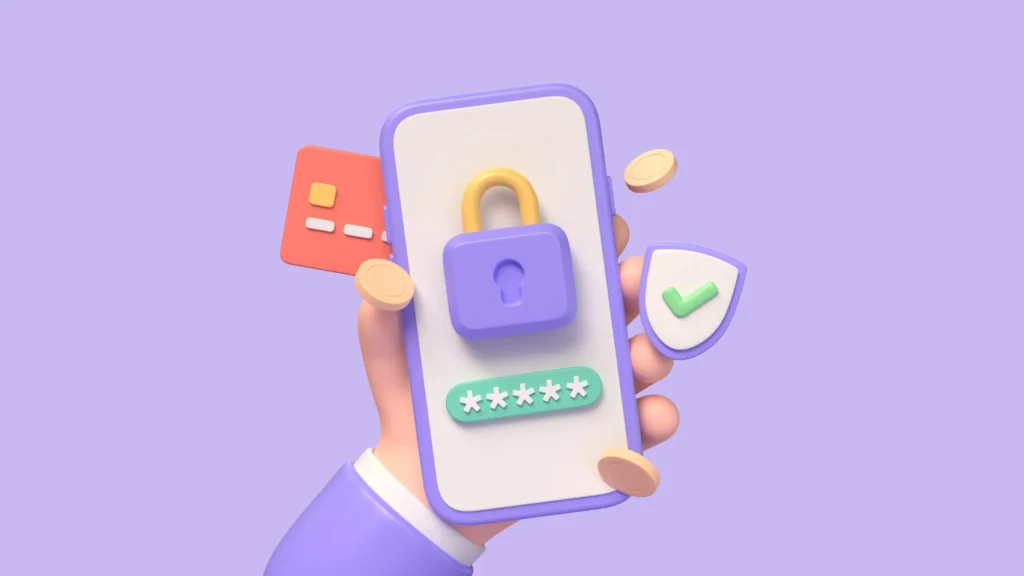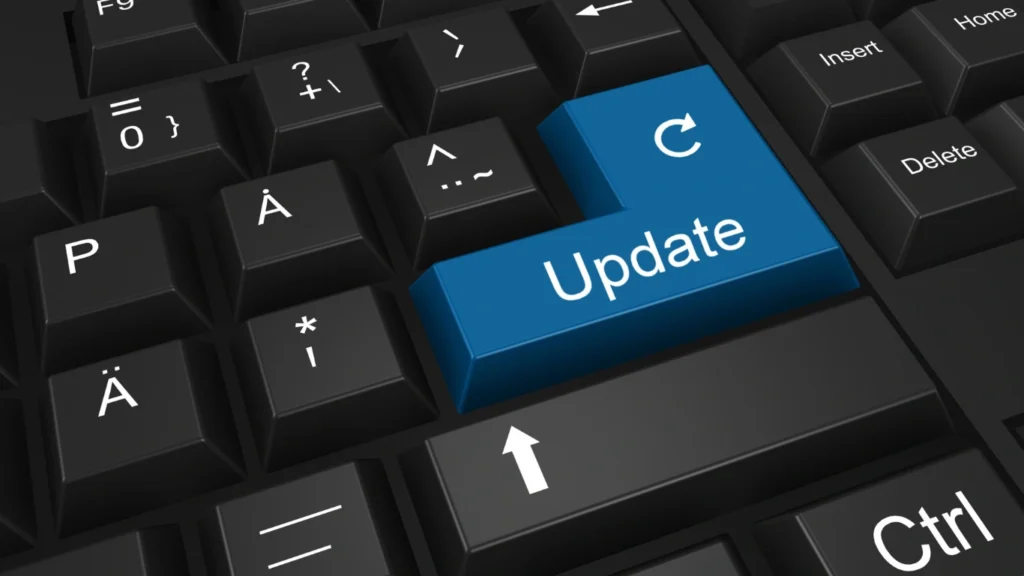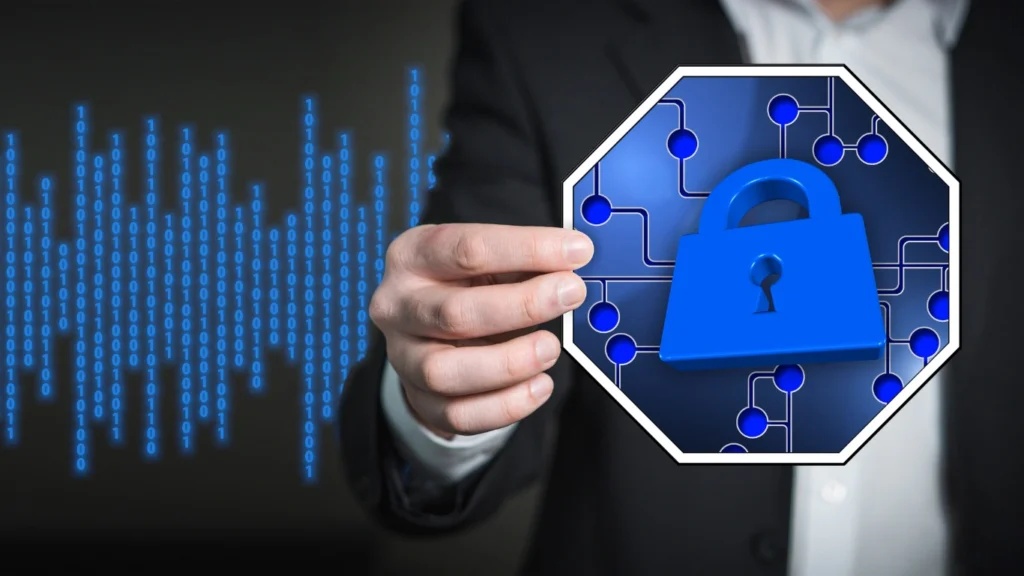Introduction to Cybersecurity:
In today’s digital age, the need for cybersecurity has never been greater. As cybercriminals continue to evolve and grow more sophisticated, safeguarding your online presence and digital assets has become an essential aspect of everyday life for individuals and businesses alike. With an increasing number of online threats, cybercrimes are on the rise, and most people and organisations unknowingly make cybersecurity mistakes that expose sensitive data and grant cybercriminals opportunities to exploit vulnerabilities. The consequences of these breaches can be devastating, leading to significant financial losses, reputational damage, and the loss of valuable data.
Cyber breaches result in massive financial costs to organisations annually, causing long-lasting damage to brand reputation and the overall trust of customers and stakeholders. Whether you’re an individual or a business leader, avoiding common cybersecurity mistakes is vital to protecting sensitive information, maintaining the integrity of your systems, and avoiding costly attacks.
In this guide, we’ll walk you through common cybersecurity mistakes, their potential impacts, and how to avoid them, all in an effort to help you safeguard your digital world from the ever-growing threat of cybercrime.
Protecting Your Digital World: Avoid These Costly Mistakes
1. Using Weak Passwords
Weak and easily guessable passwords are one of the most common cybersecurity mistakes that users make. When individuals choose simple passwords or reuse the same one across different platforms, they are essentially giving cybercriminals an open invitation to breach their accounts. Hackers often use automated tools to run brute-force attacks, systematically attempting different combinations to crack weak passwords. When passwords are based on personal information like birthdays, pet names, or easily guessable phrases, they become even more vulnerable to such attacks.
The Impact:
- Easy access for hackers to personal and corporate accounts.
- Identity theft and unauthorised use of personal information.
- Financial losses through unauthorised transactions or stolen credit card details.
How to avoid this?
- Use strong passwords that consist of a mix of uppercase and lowercase letters, numbers, and special characters.
- Enable password managers to generate and store complex passwords securely.
- Avoid using personal details such as birthdays or pet names in your passwords.
- Regularly change your passwords and avoid sharing them. Implement passphrases (longer sequences of words) to increase complexity.

2. Lack of Employee Training
Human error continues to be one of the primary and most significant causes of cybersecurity breaches across industries. In the fast-paced, high-pressure environment of modern workplaces, it is all too easy for employees to make simple yet costly mistakes that expose an organisation to cyber threats. The human factor is often cited as one of the weakest links in cybersecurity, particularly when employees are not adequately trained in cybersecurity best practices or lack awareness of the critical risks associated with digital threats. In fact, regardless of the advanced security tools and technologies an organisation may implement, the risk of human error remains a persistent and often underestimated vulnerability in an organisation’s cybersecurity framework.
Employees who are not well-versed in cybersecurity protocols are particularly vulnerable to falling victim to phishing scams, which are one of the most common and effective methods cybercriminals use to gain unauthorised access to sensitive data. Phishing attacks often come in the form of deceptive emails, text messages, or phone calls that appear to come from trusted sources, such as colleagues, vendors, or even high-level executives within the organisation. These fraudulent communications often encourage employees to click on links, download attachments, or provide personal or financial information. Without proper training, employees may unknowingly engage with these malicious messages, providing attackers with the critical information needed to breach the organisation’s defences. In some cases, cybercriminals may even spoof an employee’s email address, making the attack more difficult to detect and increasing the likelihood of the employee trusting the scam.
Additionally, human error can manifest in other dangerous ways, such as mishandling sensitive or confidential data. Employees may inadvertently share classified information via unsecured communication channels, store sensitive data on unprotected devices, or leave sensitive documents accessible to unauthorised individuals. The risk of mishandling critical data is particularly high in industries where compliance with privacy laws and regulations is mandatory, such as in healthcare or financial services. A simple oversight, such as emailing a report containing private client information to the wrong recipient, could result in serious breaches of privacy and costly legal consequences. Moreover, employees who do not understand the importance of encryption, secure file storage, or proper data disposal protocols might inadvertently expose sensitive company information to unauthorised individuals, resulting in long-term financial damage and reputational harm.
Another significant aspect of human error in cybersecurity is the unintentional installation of malicious software, such as viruses, ransomware, or spyware. Employees who are not aware of the risks associated with downloading files or clicking on seemingly innocuous links may inadvertently allow malware to infect the organisation’s network. Malicious software can be disguised as harmless attachments, software updates, or online advertisements, making it difficult for employees to discern legitimate content from potential threats. Once malware is installed on a device, it can quickly spread across a network, potentially compromising the entire infrastructure. In the case of ransomware attacks, malicious software can encrypt critical business data, rendering it inaccessible until a ransom is paid, and causing extensive downtime that disrupts operations and leads to financial losses.
The lack of cybersecurity awareness in employees also significantly increases the likelihood of insider threats—where individuals within the organisation, whether intentionally or unintentionally, compromise security protocols. Insider threats can arise from disgruntled employees, careless actions, or even negligent staff members who may unintentionally leak data or expose the organisation to risks. These threats are particularly challenging to detect, as they often involve individuals with authorised access to sensitive systems and data. An employee who is unaware of the risks associated with sharing login credentials or failing to log out of a secured system can unwittingly open the door for cybercriminals to exploit internal access and gain unauthorised entry.
Moreover, human error often leads to compliance violations, especially when employees are not familiar with the specific legal and regulatory requirements that govern their industry. Many industries are bound by strict laws and regulations that dictate how data should be handled, protected, and disposed of. In the healthcare sector, for example, the Health Insurance Portability and Accountability Act (HIPAA) sets standards for safeguarding medical data, while the General Data Protection Regulation (GDPR) applies to companies handling personal data in Europe. Employees who do not understand or follow these protocols could unknowingly violate compliance standards, resulting in heavy fines, legal action, and reputational damage to the organisation. The risk of compliance violations increases when employees are not regularly trained on the latest regulations, security procedures, and industry standards, leaving the organisation exposed to significant liabilities.
The consequences of human error in cybersecurity can extend beyond immediate financial losses to long-lasting damage to an organisation’s reputation. Clients, customers, and business partners may lose trust in a company that has experienced a cybersecurity breach due to an employee’s mistake. This erosion of trust can take years to rebuild and may result in lost business opportunities, damaged relationships, and reduced market share. In industries where cybersecurity is a critical aspect of the business, such as financial services, healthcare, and government, the failure to implement strong cybersecurity awareness programmes for employees can be catastrophic for both the organisation and its stakeholders.
To mitigate these risks, it is essential for organisations to prioritise cybersecurity training and education as part of their overall security strategy. Regular and comprehensive training sessions should be conducted to ensure that all employees, regardless of their role or seniority, are aware of the latest threats, security protocols, and best practices. This training should cover topics such as recognising phishing attempts, handling sensitive information, securely using mobile devices, and following proper procedures for reporting suspicious activities. Additionally, organisations should implement strong internal security policies, including the use of multi-factor authentication (MFA), encryption, and secure communication tools, to help employees protect data and systems from unauthorised access.
What are the impacts?
- Increased risk of phishing attacks.
- Unauthorised access to sensitive files.
- Data leaks and compliance violations.
How can we prevent this?
- Conduct regular cybersecurity training sessions.
- Educate employees on identifying phishing emails and handling sensitive information.
- Implement strict security protocols for accessing company data.
- Encourage a cybersecurity-aware culture.
3. A lack of multi-factor authentication (MFA)
Multi-factor authentication (MFA) is a security measure that significantly enhances the protection of sensitive information by requiring users to provide multiple forms of verification before granting access to their accounts or systems. Unlike traditional password-based security, where users only need to enter a password to gain access, MFA adds a layer of complexity by requiring users to authenticate their identity through at least two or more verification factors. These factors typically fall into three categories: something you know (such as a password or PIN), something you have (like a mobile device, smart card, or security token), and something you are (biometric data, such as fingerprints or facial recognition).
While the implementation of MFA might be seen as an extra step that can seem inconvenient or time-consuming for some users, it is undeniably one of the most effective methods of mitigating unauthorised access to sensitive accounts, systems, and data. The reason for this is simple—passwords, by nature, can be easily compromised. Whether through brute-force attacks, phishing schemes, or data breaches, hackers have become adept at stealing passwords. By relying solely on passwords for authentication, you are providing cybercriminals with a potential key to your personal, financial, or corporate data. This is where MFA steps in to provide a robust defence.
With MFA, even if a malicious actor acquires or guesses a password, they are still unable to gain access without completing the additional verification step, which significantly reduces the risk of unauthorised access. For example, in a common MFA setup, after entering a password, users may be prompted to enter a one-time passcode (OTP) sent to their registered mobile device or use a biometric scan (such as a fingerprint or face scan). This process ensures that the user is not only who they claim to be but is also physically present with the necessary devices or authentication methods.
Furthermore, MFA is not just a precautionary measure for high-security systems. It has become an increasingly standard security practice across various online platforms and services, ranging from email accounts and social media profiles to banking and corporate networks. Many organisations now mandate the use of MFA as a part of their cybersecurity policies, recognising that the protection it provides against unauthorised access is essential for safeguarding sensitive data and maintaining regulatory compliance. In industries such as healthcare, finance, and government, where data breaches can have severe legal and financial implications, the adoption of MFA is particularly critical.
In addition to providing extra security, MFA also offers peace of mind to both individuals and organisations. By incorporating multiple authentication factors, users can be confident that their accounts are better protected against a wide range of cyber threats. It also provides a fail-safe mechanism; if one factor is compromised, there are still additional layers of security in place to prevent unauthorised access.
Despite the added steps, modern MFA solutions have become increasingly user-friendly, with many services offering seamless authentication methods such as push notifications or biometric scans, which make the process faster and more convenient than ever. For instance, a user might only need to approve a login attempt with a single tap on their mobile device or allow a facial recognition scan, making the security process both effective and efficient.
How can it impact us?
- Unauthorised account access due to stolen or weak credentials.
- Identity theft, leading to compromised personal, corporate, and financial information.
- Compromised financial accounts and other sensitive information.

How can we avoid this?
- Enable MFA for all sensitive accounts.
- Use authentication apps like Google Authenticator or Microsoft Authenticator.
- Regularly review and update your MFA settings.
- Implement biometric and hardware-based authentication.
4. Not updating software regularly
Many cyberattacks exploit known vulnerabilities in outdated software. Cybercriminals actively target outdated applications and systems that haven’t received the latest security patches, providing an easy route for malware, ransomware, and other malicious software to breach systems. Regular software updates are critical to staying protected against these evolving threats.

How can it impact us?
- Exposure to malware and ransomware.
- Loss of critical business data.
- Compromised customer information.
How to avoid this?
- Regularly update your operating system and software.
- Enable automatic updates whenever possible.
- Install patches immediately when released.
- Conduct regular vulnerability assessments.
5. Overlooking Mobile Security
With the increasing use of mobile devices in both personal and business operations, mobile security has become a major concern. Many mobile users fail to install necessary security apps, connect to unsecured public Wi-Fi networks, or neglect to enable device encryption. These mistakes make it easier for cybercriminals to gain access to sensitive data, including personal banking information, passwords, and more.
How can it impact us?
- Loss of confidential data stored on mobile devices.
- Access to personal and financial information through malware or phishing links.
- Risk of malware infections, spyware, and data theft.
How to avoid this?
- Use a reliable VPN to protect your internet connection on public networks.
- Install security apps that offer real-time protection and regularly update them.
- Enable biometric authentication (fingerprint or face recognition) for added security on mobile devices.
- Ensure that mobile operating systems and apps are regularly updated to patch security flaws.
- Be mindful of app permissions, and avoid downloading apps from untrusted sources.
6. Not backing up regularly
Failing to back up critical data is a critical error that can lead to permanent data loss in the event of a cyberattack or system failure. Ransomware attacks, for example, encrypt files and demand payment for decryption keys. Without backups, businesses risk losing essential data and experiencing significant downtime. Regular backups are essential for disaster recovery, ensuring that organisations can restore their systems and operations quickly after an attack.
How can it impact us?
- Permanent data loss and the inability to recover from ransomware attacks.
- Downtime and business disruption, potentially costing businesses millions.
- Inability to restore critical data, leading to business continuity issues.
How to avoid this?
- Schedule automatic backups for critical business and personal data.
- Store backups in secure, off-site locations or use cloud-based solutions.
- Regularly test data recovery processes to ensure backup reliability.
- Implement a disaster recovery plan that includes regular backup routines.

7. Neglecting Firewall and Antivirus Protection:
Firewalls and antivirus software are essential for detecting and blocking malicious traffic and malware. Without these protective measures, your system becomes vulnerable to external attacks and viruses. Many users either disable firewalls for convenience or fail to update antivirus definitions, allowing threats to bypass security defenses.
What are the impacts?
- Malware infections that can spread throughout your system.
- Unauthorized network access by cybercriminals.
- Compromised sensitive files and data loss.

How to prevent this from happening?
- Always install and update firewall and antivirus software on your devices.
- Enable real-time scanning to detect potential threats as they occur.
- Regularly monitor firewall logs for suspicious activity and unknown connections.
8. Poor Access Control
Improper access control can lead to unauthorized individuals gaining access to sensitive data or systems. Granting excessive access to employees or third parties increases the risk of insider threats, data leaks, and the potential for escalating privileges by malicious actors. Failure to implement proper access control policies can leave your business vulnerable to cyberattacks.
What are the impacts?
- Violation of data privacy regulations, such as GDPR.
- Unauthorized data access leading to leaks or misuse.
- Increased risk of insider threats or sabotage by disgruntled employees.
How to prevent this from happening?
- Implement role-based access control (RBAC) to ensure that users only have access to the data they need.
- Regularly review and update user access privileges based on job responsibilities.
- Use strong authentication methods for privileged accounts to prevent unauthorized access.
9. Ignoring Incident Response Planning
An unprepared response to a cybersecurity incident can lead to prolonged damage and increased recovery times. Many organizations lack a structured incident response plan, leading to chaos and confusion during a cyberattack. A well-prepared and practiced response plan can minimize the damage and help an organization recover swiftly.
What are the impacts?
- Extended downtime.
- Increased damage to data and infrastructure.
- Loss of customer trust.
How to prevent this from happening?
- Develop and regularly update an incident response plan.
- Conduct cybersecurity drills and simulations.
- Assign a dedicated response team and communication strategy.
10. Failing to Secure Cloud Storage
As more businesses transition to cloud services, securing cloud storage becomes a priority. Poorly configured cloud storage settings, such as leaving data publicly accessible or failing to use strong access controls, can lead to data exposure and severe compliance violations.
What are the impacts?
- Data exposure to unauthorized third parties.
- Loss of intellectual property or confidential business information.
- Regulatory fines and legal consequences for non-compliance.
How to prevent this from happening?
- Ensure that all cloud data is encrypted and only accessible through strong access controls.
- Regularly audit cloud security settings to prevent inadvertent data exposure.
- Implement identity and access management (IAM) policies to control who can access cloud resources.
Conclusion
In an increasingly digital world, cybersecurity is no longer just a luxury—it’s a necessity. As cybercriminals continue to develop new and more sophisticated tactics, it’s crucial to stay ahead of potential threats. By recognizing and avoiding common cybersecurity mistakes, individuals and organizations can better protect themselves from devastating breaches, financial losses, and reputational harm.
From implementing strong password policies and using multi-factor authentication to regularly backing up data and educating employees about the latest threats, every step taken to bolster cybersecurity makes a significant difference. The key to protecting your digital world is staying vigilant, proactive, and committed to continuously improving your cybersecurity practices. Remember, every precaution you take today helps to build a stronger defense for tomorrow.
Contact Digipixel today to build a website that stands out and drives measurable results.